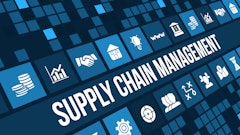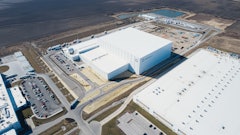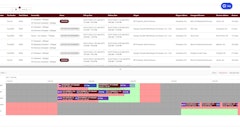In the September 2010 “Cool Insights” article [Predictive Modeling For Food Safety, page 12], Dr. John Bartholdi presented an excellent argument for how economic value can be generated by the new trace back laws.
This can be done by using data collected for trace back to predict forward in time the quality of the product and its shelf life. This has the potential to have significant impact on how food is moved throughout the supply chain and how stores replenish their shelves.
In discussions with individuals in the food industry about this issue, one common question that comes up is: where and how are we going to sense this data? At the Georgia Tech Research Institute’s Agricultural Technology Research Program and Georgia Tech’s Integrated Food Chain, we have been addressing this question for many years.
The most critical point for data collection for predictive modeling is the farm, but the data must be updated as it moves through the supply chain. Because this work is in the research phase, defining what data is required and how to justify the cost of collection are paramount.
A lack of a technical infrastructure on the many far-flung farms, as well as the difficulty in operating electronic systems in the field, initially present serious obstacles to collecting data for predictive modeling, but such obstacles can be overcome with current technology.
Work being done by many research groups around the world, including Georgia Tech, shows that it is possible to develop sensor hardware and software to automatically grade natural products including citrus fruits, apples, corn and jalapenos at the packing houses.
However, this technology can be applied to cost-effectively grade the product as it is growing and throughout the supply chain. Even the more challenging parameters that go into determining quality such as sugar content can be estimated through the use of the right sensor.
In addition, imagine how data from a weather station or a wireless sensor that monitors the moisture, pH, and pathogens in the soil can be integrated with visual grading data to accurately evaluate the product quality and ripeness in real time for the farmer and the supply chain. Other information could also be extracted from this data to make yield projections, and anticipated shelf life of the product.
Knowing that these various sensors exist and that you can integrate the data to provide actionable information, then one can begin to ask the question: How would such a system work?
Finding Solutions
There are several ways that this could be accomplished, and each method has its advantages and disadvantages. First, you could deploy a fixed set of sensors on a slowly rotating base that has a wide field of view. This system can provide constant surveillance of the field, but multiple systems would be needed for a farm beyond a few acres in size.
Another possibility is to use an unmanned aerial vehicle that flies just above the crops and automatically collects data. This system would have the ability to cover large fields in a very short amount of time, but it would not provide constant surveillance. Finally, you could use a long-duration surveillance vehicle or blimp. This vehicle can stay airborne for months with very little maintenance and provide coverage of a wide area for long periods of time.
The last two solutions could be used to cover multiple farms simultaneously, thus spreading the cost of the systems across multiple farmers.
There are also other potential benefits beyond crop-specific data collection that could be derived from these sensors. Given that the imaging system is already scanning the farm, a different algorithm could be used to scan the leaves for signs of pests or disease. The system would not be able to see every leaf from every angle, but the odds are very good that it could detect these conditions early.
The business model for this type of technology must also evolve. The initial cost and responsibility of supporting this technology cannot fall solely on the farmer. If the value of this data can be translated into less spoilage or longer shelf life, then new business models must be developed to capture that value for farmers.
The opportunity to apply new technology at the farm that enables predictive modeling of product quality and shelf life has the ability to revolutionize the agribusiness community. In order for this technology to reach its maximum impact, there are both technical and business hurdles that must be overcome.
Many of the technology pieces to this puzzle currently exist, but still more research is needed to create the right system for this application. While some of these ideas might sound fanciful, the concepts are not based in science fiction, but upon current science and technology.
Which leads to one last question: what will your world look like in 10 years?



























